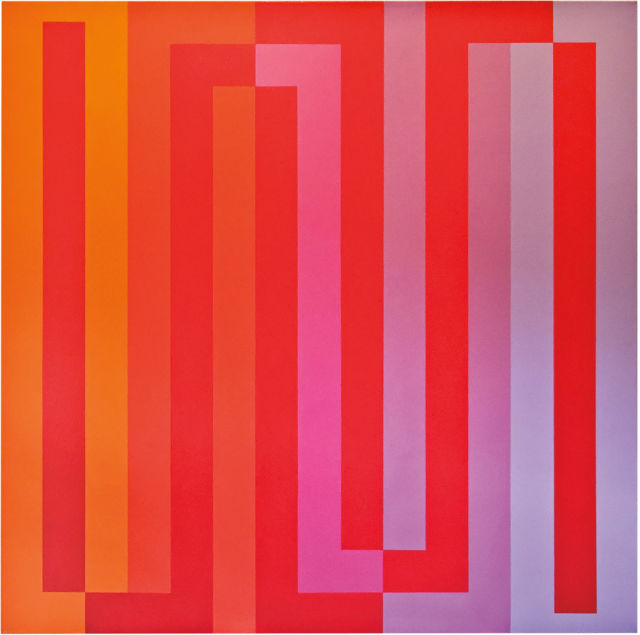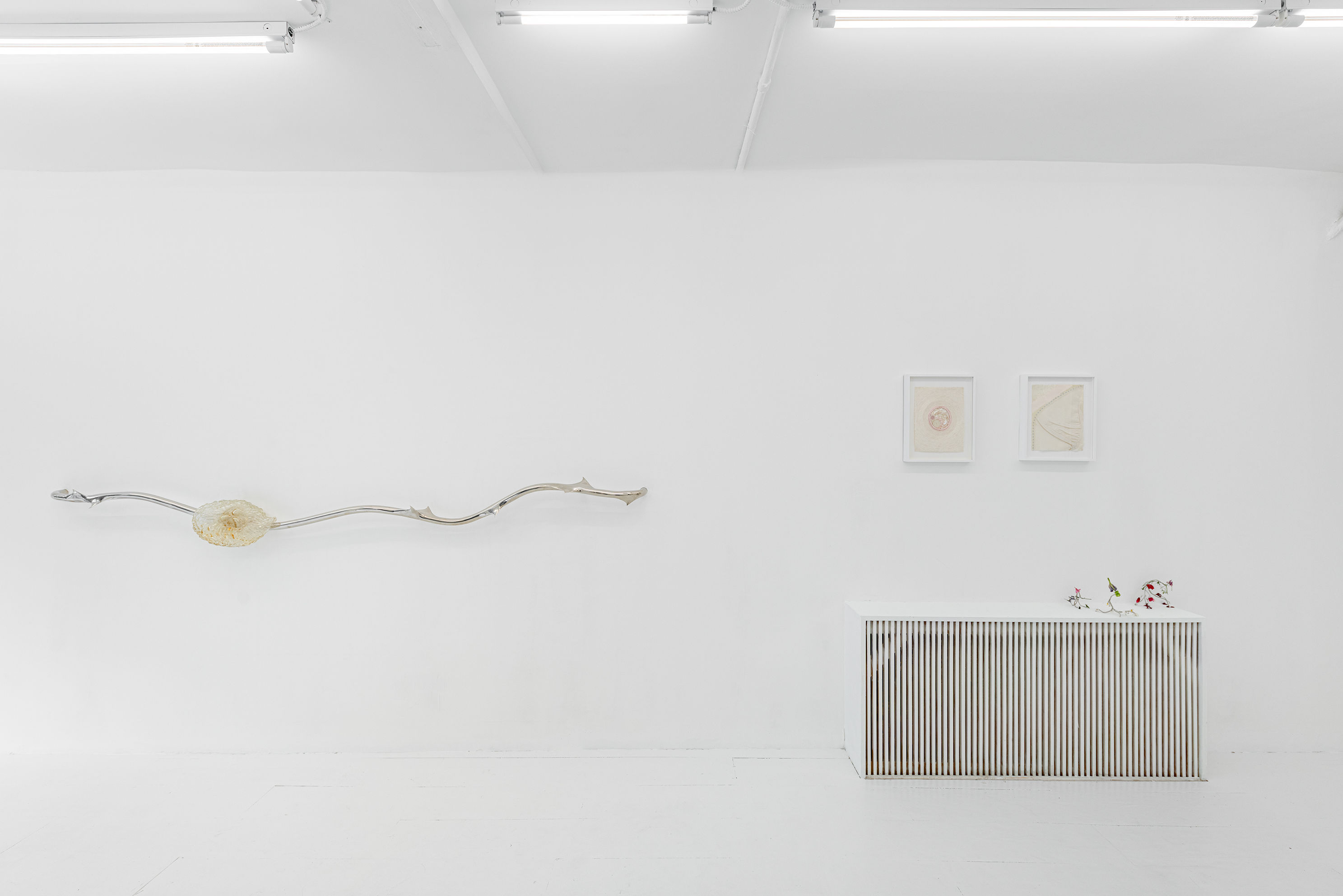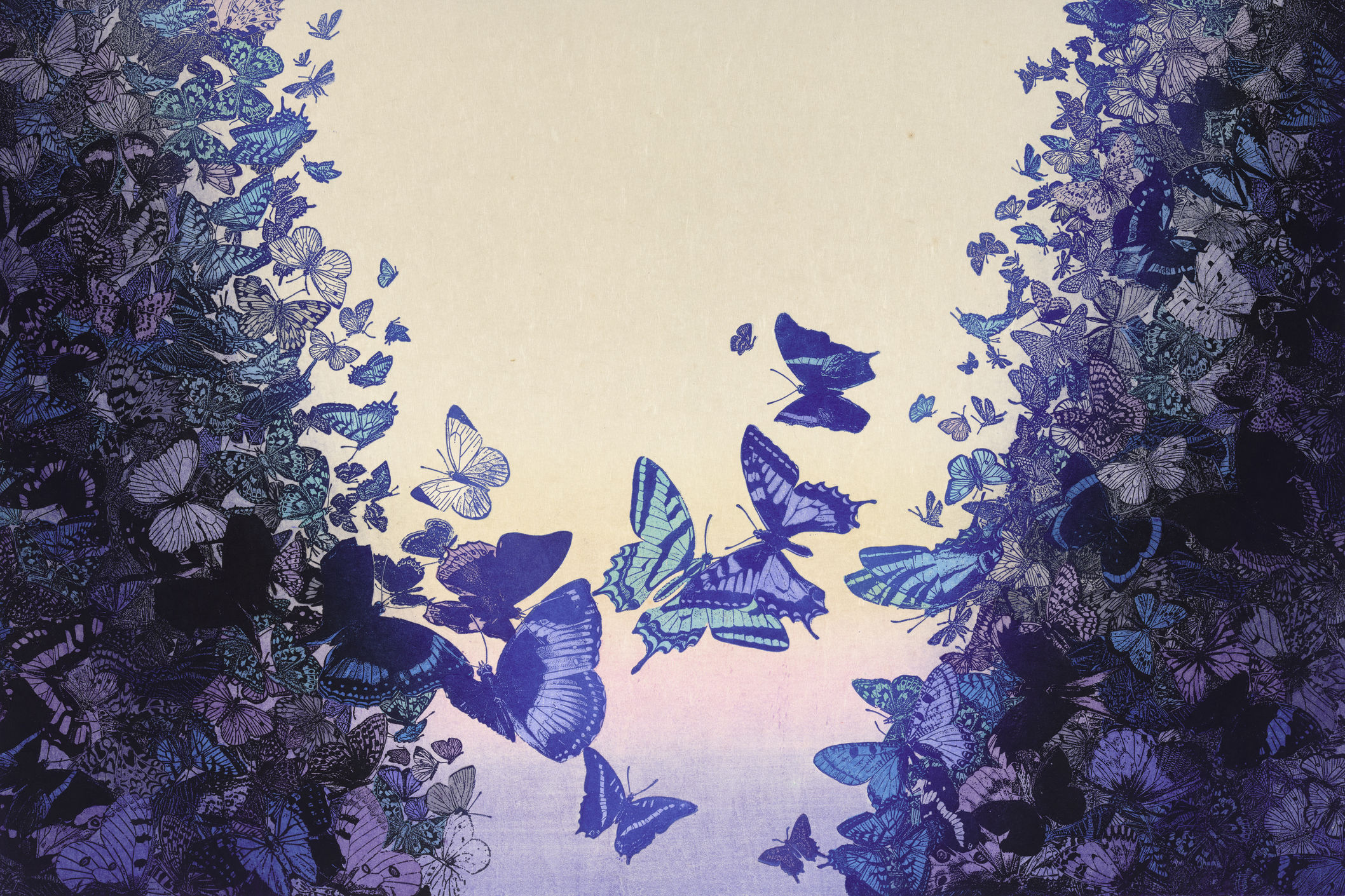Longtime Graphic Designer Ellen McFadden Goes Big on Canvas

Ellen McFadden
Image: Christopher Dibble
When Ellen McFadden first started working as a freelance graphic designer, precision was everything. “You had to be a walking line,” she recalls of the pre-computer need for accuracy, when designers worked without digital grids and drawing a straight line was a physical process. That was in 1965, when she and her husband, Irwin McFadden, left Portland for graphic design positions at Washington State University.
Born in 1928, McFadden—a “creative” who predates the title—has followed a pioneering graphic design career with a new one in painting. Her exactitude is still visible in meticulously arranged, brightly hued compositions exhibited around the city in spaces that include the Hoffman Gallery, Wieden & Kennedy Gallery, and Portland International Airport.
Next up: a new show at NE Alberta Street’s Ampersand Gallery, running September 28–November 15. We talked with the former student at the Portland Art Museum’s art school (which later became the Pacific Northwest College of Art), World War II Red Cross volunteer, longtime teacher, and local Flickr VIP—her tracing of the history of graphic design by country and movement has earned her thousands of followers—about art and aging, Northwest inspirations, and old Old Portland.
What is something you remember about Portland that (probably) no one else does?
The opening of the Portland Art Museum Hirsch Wing in 1939. I read about it in the newspaper, so I got dressed up and attended by myself. I was 11 and took the streetcar. The adults weren’t looking at the paintings but were talking in groups; Hitler had just rolled into Poland.
What was Portland’s art scene like when you were in school?
There was very little outside monetary support, especially for the fine arts, before grants, etc. Everyone either taught at the museum school or had a part-time job to live on, or like C. S. Price (who never taught) lived most frugally in old Portland downtown buildings.
How about the graphic design world when you started out?
Douglas Lynch was the pinnacle of the Portland commercial art scene when I was a full-time student. (The term “graphic design” did not yet exist.) My more serious commercial art study with him came after my full-time museum school years. I had gone through a divorce and had two young daughters and myself to support.

Solkuks Wanapum
Image: Courtesy Ellen McFadden
Your painting’s titles are often drawn from the region’s Native tribes. What is the significance of Native culture to you?
My early experience with local Native tribes came through my birth father’s tie to the Chehalis tribe and my time in Alaska. So much has been forgotten about the powerful and numerous Indian tribes throughout the Pacific Northwest that are now long gone—I saw so much more of their culture than exists today. But the names survive.
How else did growing up in the Northwest impact your art?
I relate to Ken Kesey and his novels. I really am, deep down, a provincial from the Pacific Northwest: the landscape and the Pacific Ocean.
What do you gain from being an artist at your age?
Forgetting about earning a living, paying the rent, facing the bills, putting something into retirement and—free at last to paint.
What is next for you?
That’s a hilarious question to put to someone who sees 89 coming over the horizon! Get more paintings finished before I fall over dead.




